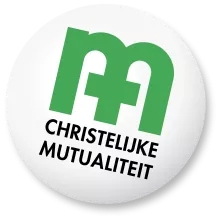History: employees compulsorily insured (1945-1963)
Originating from mutual assistance societies, CM has evolved over time into a dynamic organization that is active in many areas. A look back.
Introduction of compulsory health insurance
Immediately after the liberation, the Social Pact was implemented. From January 1, 1945, employees were insured against illness and disability. To do this, they first had to join a health insurance fund of their choice. The management of health insurance fell into the hands of the National Fund for Insurance against Illness and Disability, the predecessor of the Riziv .
Since compulsory insurance had to be introduced quickly, it was not without problems. Regulations and forms were delayed, staff had to be recruited.
Renewal
There was also clear dissatisfaction within the Landsbond just after the war. The executive board met irregularly, board positions were not filled and tensions with the other branches of the Christian labor movement ran high.
The tide turned from 1946 onwards. Several members of the executive board who had spoken out against compulsory insurance were replaced. The duo Herman Kuypers - Louis Van Helshoecht took over and heralded the renewal . They worked on a new staff statute, the establishment of a study and documentation service, the republication of the magazine and the organization of the recruitment policy. Relations with the Christian labor movement improved. In 1951, the National Union even moved to the movement's common building in Wetstraat.
Thanks to the introduction of compulsory insurance, CM's membership number increased spectacularly. At the end of 1945 the organization had 585,989 members, by 1963 this number had risen to 940,439, approximately 43 percent of the total number of compulsorily insured persons. Two-thirds of the members came from Flanders. The workforce followed the growth in membership numbers. In 1944, LCM employed barely ten staff members. This number rose to almost 100 in 1950 and 270 in 1962.
Additional insurance
Not everyone was compulsorily insured against illness and disability. Until the early 1960s, civil servants and self-employed people could voluntarily join a health insurance fund. The free insurance therefore continued to exist.
CM organized additional insurance outside the legal framework of free and compulsory insurance. For example, it offered its members patient transport, a rest allowance for newly delivered mothers and compensation for death costs. After a serious illness or operation, CM members could go to a convalescent home. In 1947, the new 'Preventive Air Cures' service was also created, the predecessor of Kazou. This initiative also fitted in with the supplementary insurance. Children could go on holiday with CM, and healthy mountain or sea air, exercise and good food were supposed to strengthen the youth. The pre-marital savings service encouraged young members to save for their marriage. Intersoc, the CM holiday service, grew out of various holiday initiatives in 1961.
The fact that CM grew into an organization with almost a million members did not mean that the health insurance company only organized compulsory and supplementary insurance. Especially during the first post-war years, CM regularly held parades through the streets and organized pilgrimages to Scherpenheuvel and Oostakker. Days on which chronically ill people and people with disabilities were the focus followed one another. The Christian Unions of Pensioners were founded in 1956. CM remained a membership movement .
